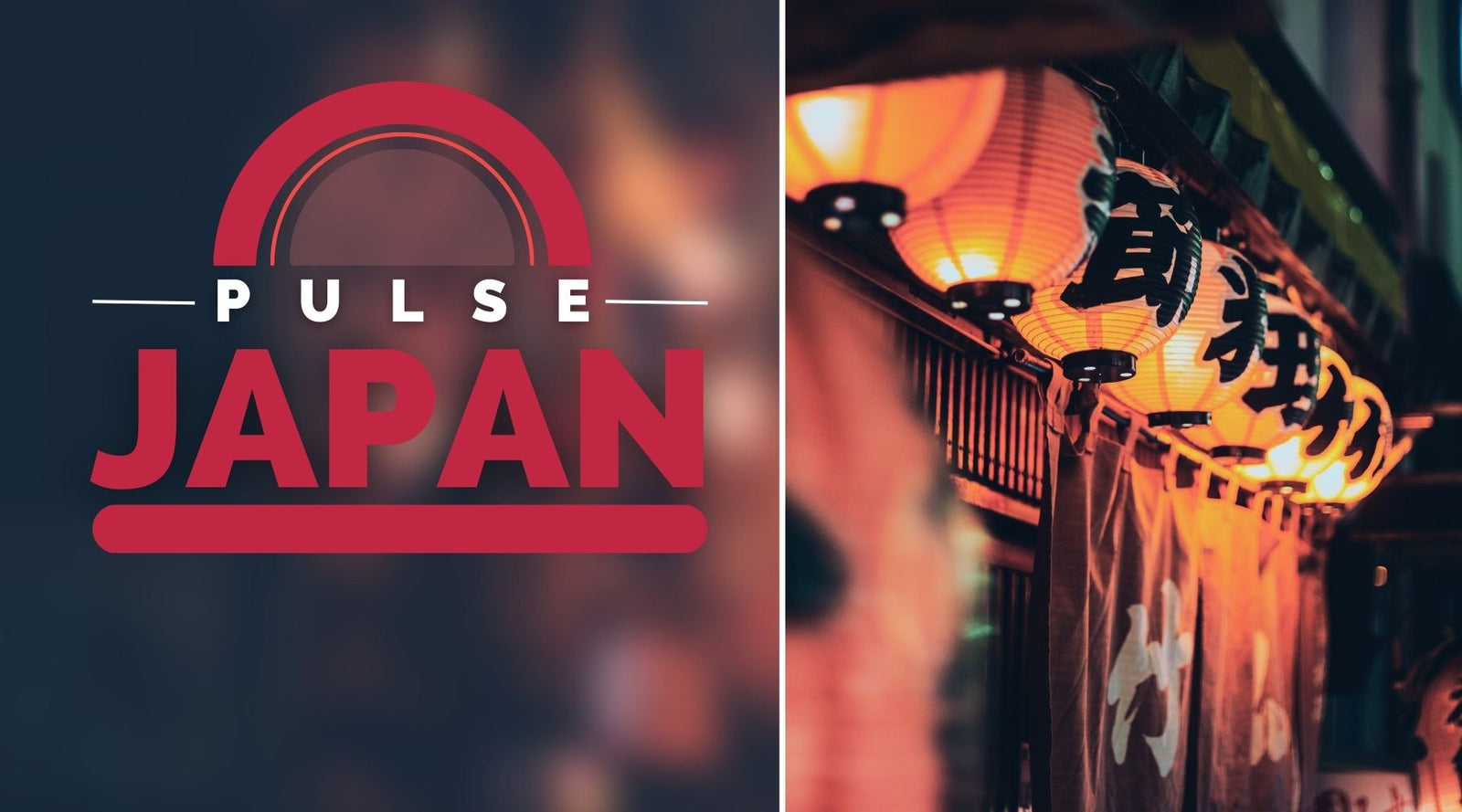Navigating Japan Like a Pro: 10 Essential Tips for Using All Types of Transportation

If you think Japan's cherry blossoms are impressive, wait until you experience its public transportation system. It's like the Swiss watch of the transport world—precise, reliable, and downright magical. The network is a testament to efficiency, handling over 30 billion passengers per year without breaking a sweat. From sleek Shinkansen (bullet trains) and bustling metros to quaint local buses and spotless taxis, Japan has got it all covered (Japan Guide).
When it comes to getting around in Japan, trains are the undisputed champions. They zip across the country like ninjas on a mission, connecting even the most far-flung destinations. The Shinkansen, or bullet trains, are the crown jewels of this rail empire, slicing through the landscape at speeds that redefine punctuality (Asia Vacation Group). Besides the long-distance and ultra-fast Shinkansen, there's a labyrinth of local and regional trains crisscrossing every major city, town, and village. The rail system is so vital that it even dictates the rhythm of Japanese daily life.
But hey, trains aren't the only game in town. Japan's transportation menu has some delectable variety. Local buses are the unsung heroes, especially when it comes to city exploration. They sneak into places where trains can't reach, allowing you to see Japan in all its detail, from suburban sprawls to off-the-beaten-path gems. Long-distance buses serve as a budget-friendly alternative for those willing to trade speed for scenery.
Taxis, while pricier, are nothing short of impeccable. Clean, safe, and driven by consummate professionals, these vehicles offer door-to-door convenience, especially useful late at night or in less accessible areas (Expatica).
And let's not forget the captivating water buses! These aquatic wonders glide through the waterways of cities like Tokyo, offering a scenic reprieve from the hustle and bustle.
Navigating this cornucopia of transport options may seem daunting, but once you get the hang of it, it's like riding a bike—only in a country where bicycles might even come equipped with GPS!
Navigating Japan's intricate transportation system opens up endless possibilities for adventures—whether it's speeding through the country on a bullet train or exploring quaint alleyways via a local bus. Each mode of transport opens a unique window into the heart of Japan.
Mastering the Rail System
Japan's rail system is a marvel of modern efficiency and reliability. From regional lines to the iconic Shinkansen, the network is both vast and navigable, even for first-time visitors.
Japan Railways (JR) is the backbone of Japan’s rail network. Following its privatization in 1987, JR split into several regional companies, such as JR East and JR West, which manage over 20,000 kilometers of rail lines across Japan (JRailPass).
Besides the JR Group, private railway companies like Keio and Kintetsu serve specific regions. These companies collectively ensure that wherever you want to go, there's a train to get you there. The private lines are particularly common in metropolitan areas, providing crucial connections that complement the JR network.
At first glance, Japan’s train stations might seem a labyrinthine nightmare. However, smart design makes them surprisingly user-friendly. Virtually all stations feature color-coded lines and numbered stations. For instance, the Tokyo Metro’s Ginza Line is a cheerful yellow, while the Marunouchi Line dons a dignified red L(ive Japan).
Beneath your feet, you’ll find numbered markers accompanied by circles or triangles on the platforms, indicating where train doors will open (Japan Experience). This is not just a feat of organization but a crucial part of what keeps trains running on time to the second.
Ah, the Shinkansen – the bullet train – the epitome of speed and comfort. If you’re taking a Shinkansen, here are some must-knows:
-
Arrive Early: It’s wise to get to the station at least 30 minutes before departure. This buffer helps you have enough time to navigate the station and find your platform (Shinkansen Ticket).
-
View Seats: For a panoramic view of Mount Fuji on the trip from Tokyo to Kyoto, book the E seat. Insider tip: the iconic mountain is visible on the right side when traveling from Tokyo, and the left side when heading back (Japan Wonder Travel).
-
Platform Decorum: Shinkansen trains have separate tracks and platforms due to their distinct gauge. Look for clearly marked signs indicating Shinkansen platforms to avoid any mix-ups (Rough Guides).
Mastering Japan’s rail system opens up a world of travel possibilities, from bustling cities to tranquil countryside vistas. It's more than just a mode of transportation — it's part of the adventure itself.
Navigating the railways is one step toward exploring the deeper layers of Japan’s transport marvel.
Utilizing the Japan Rail Pass
The Japan Rail Pass, often referred to as the JR Pass, is your golden ticket to unlimited travel on most Japan Railways (JR) trains, buses, and even some ferry services. Think of it as an all-access backstage pass to Japan’s extensive rail network, offering significant savings if you're planning to hop around the country frequently. But there's a catch! This marvelous pass is available exclusively to tourists, meaning you need to be visiting on a “Temporary Visitor” visa status to qualify. (JRailPass)
When it comes to flexibility, the JR Pass has got it covered with three main options:
-
7-Day Pass: Perfect for a whirlwind week-long tour. It's priced at ¥50,000 for adults and ¥25,000 for children.
-
14-Day Pass: Ideal for a two-week jaunt, costing ¥80,000 for adults and ¥40,000 for children.
-
21-Day Pass: Best for extended stays, setting you back ¥100,000 for adults and ¥50,000 for children. (Live Japan)
Feeling fancy? You can upgrade to a Green Pass for more luxurious travel with roomier seats and additional perks. This will cost a bit more, with the 7-day pass going for ¥70,000, the 14-day for ¥110,000, and the 21-day for ¥140,000. Children’s prices are about half of those rates.
To truly capitalize on your JR Pass, some strategic planning can go a long way. Here are a few tips:
-
Map Out Major Destinations: If you're hitting up cities like Tokyo, Kyoto, Osaka, and Hiroshima in one trip, the pass will save you big bucks. For instance, a round trip from Tokyo to Kyoto alone nearly justifies the cost of a 7-day pass.
-
Online Reservations: Take advantage of the JR Pass’s ability to reserve seats on Shinkansen and limited express trains at no extra cost. This guarantees you a seat during busy travel times and offers peace of mind.
-
Include JR Buses and Ferries: Beyond trains, the pass includes JR bus services and the JR Miyajima Ferry, allowing for seamless travel to iconic spots like Miyajima Island.
-
Stay Informed: Not all Shinkansen are covered. The super-fast Nozomi and Mizuho services aren't included, so stick to the Hikari and Sakura services which are equally delightful.
Traveling in Japan can be a complex maze of schedules, routes, and tickets, but with the JR Pass in hand, you’ll feel like a seasoned local in no time. And remember, always check that your chosen lines are covered to avoid any hiccups.
Next up, we’ll dive into navigating the metro and local trains to help you move around cities like a true pro.
Navigating the Metro and Local Trains
Japan's rail network isn't just a homogenous web of tracks; it's more like an intricate tapestry woven with lines from both Japan Rail (JR) and an array of private railway companies. If you’re new to Japan, it can be tricky to tell them apart. Here’s a tip: JR lines often have square station indicators, while Metro and other privately operated lines come with round indicators (JapanCityTour).
JR lines cover the country extensively, acting as the backbone of Japan's rail system with a focus on both local commuter service and long-distance travel, including those fabulous Shinkansen bullet trains. On the other hand, private railway lines usually connect metro areas and provide additional routes within urban settings. These lines have made the daily commutes of millions of Japanese smoother and more efficient (JRPass).
Ah, rush hour. It’s the time when every inch of space on the trains gets filled faster than you can say "Sumimasen" (Excuse me). In major cities like Tokyo, the peak times are usually between 8 AM and 9 AM and just after 5 PM. Morning rush hours tend to be more intense than evenings (Japan-Guide).
Here are some tips to dodge those crowds:
-
Travel Off-Peak: Schedule your rides either early in the morning or late in the evening.
-
Utilize Alternative Routes: Sometimes taking a slightly longer but less crowded route can be more comfortable.
-
Plan Ahead: Use apps like Hyperdia or Google Maps to check train schedules and crowd indicators in real-time.
Japanese trains are not just about getting from point A to B; they also come with a set of unwritten rules that ensure a pleasant trip for everyone.
-
Silence is Golden: Talking on the phone is a big no-no. If you must make a call, do it in the designated areas. Keep all chatter to a minimum, reflecting the collective aim for a quiet environment (JRailPass).
-
Mind Your Space: Don’t sprawl your belongings. Keep bags either on your lap, in front of you, or on the overhead rack. When standing, be mindful not to take up too much room. And yes, avoid those strong-smelling foods; Ekiben (station lunch boxes) without strong odors are your best bet (JapanLivingGuide).
-
Priority Seats are Sacred: These are reserved for the elderly, disabled, pregnant women, and parents with small children. Even though you can occupy these seats during low-traffic times, always be prepared to give them up when someone in need boards the train (JRailPass).
-
Lining Up: Remember to queue in an orderly fashion at the designated spots on the platform. Wait for passengers to disembark before you start boarding (JRailPass).
These guidelines ensure everyone enjoys their commute, making it easier for you to navigate like a local. Up next, we'll focus on another crucial facet of Japan's transportation landscape.
Exploring Japan by Bus
Navigating Japan by bus might seem daunting at first, but once you get the hang of it, it’s a breeze. Local buses are a quintessential part of daily life in Japan, and they can be a fantastic way to explore cities at a more leisurely pace. In cities like Kyoto and Sapporo, where trains might not reach every corner, buses become the MVPs.
Most city buses operate on a flat fare system, which means you pay the same amount regardless of the distance traveled. Usually, you’ll enter the bus from the front door, pay your fare upfront, and exit from the rear. When it comes to payment, having an IC card (like Suica or Pasmo) simplifies the process. Just tap your card when you get on and off the bus, and voila—you’re set!
Long-distance buses, especially those operated by companies like Willer Express, are a budget-friendly way to travel across Japan. These buses often cover the same routes as high-speed trains but at a fraction of the cost. For example, the Tokyo-to-Osaka route is a popular one, and you can snag a ticket for far less than what a train might cost (Willer Express).
Overnight buses, or "moonlight buses," are another savvy option if you’re looking to save on accommodation. These buses come equipped with reclining seats, footrests, and sometimes even personal entertainment systems. With options for varying comfort levels, such as business class or even sleeper cabins, long-distance buses offer a practical way to make the most out of your travel budget.
Understanding bus schedules in Japan is straightforward once you've cracked the code. Most bus stops have timetables posted in both Japanese and English in tourist-heavy areas. Each line is usually color-coded, and stops are listed in sequential order.
When boarding a bus that does not operate on a flat fare system, make sure to grab a numbered ticket from the machine at the entrance. This ticket will match up with a fare display at the front of the bus. As you approach your stop, you’ll see the corresponding fare for your specific ticket number on the display. If you’re short on exact change, fear not—most buses have change machines onboard (Japan Travel Info).
For a smooth experience, always have your IC card handy or prepare some small yen denominations. Look out for the “IC” symbol near the door to know if you can use your IC card. This small preparation ensures you’ll dodge the dreaded search for coins at the last minute.
Japan's bus system, while extensive, pairs perfectly with its other transportation modes, offering endless exploration possibilities. Next stop? We'll dive into the intricacies of Japan's taxi and ride-hailing services, providing an array of alternatives to complement your bus journeys.
Taxis and Ride-Hailing Services
Taxis in Japan are like a secret weapon for navigating the nooks and crannies of the country. While the public transportation system is supreme, there are moments when a taxi is your best bet. Late-night outings, early-morning flights, and excursions into rural areas where buses and trains dare not go—these are perfect times to hail a cab. Not to mention, taxis in Japan are famously spotless, and the drivers won't take you for a ride—unless you ask them to.
Japan's embraced the digital age with a myriad of ride-hailing apps. Uber, while not as ubiquitous as in some countries, takes the top spot (Statista). But don't sleep on GO Taxi, a mainstay in urban mobility circuits (Japan Living Guide). Whether you're looking for a quick lift or a luxury ride, these apps have you covered. S.Ride is another notable mention, particularly helpful for English-speaking tourists (Reddit).
Speaking of language barriers, navigating them is half the fun! Japanese taxi drivers are generally trustworthy and operate by the meter (Interac Network). But giving directions can be tricky given Japan's unique address system. Here's a pro tip: Have your destination written down in Japanese or ready on your phone to show the driver. You can also pin it on a map app. If in doubt, a polite gesture and a smile go a long way.
Another insider tip? All taxis have automated rear doors, so let the driver handle opening and closing them—it's a little slice of the Japan experience.
As you explore Japan through its varied transportation options, keep these tips handy. Comfort and connectivity are always within reach, just a ride away.
Mastering IC Cards for Seamless Travel
IC cards are the holy grail of Japanese transportation ease. These smart cards, such as SUICA, PASMO, and ICOCA, function as rechargeable prepaid cards that make navigating Japan's public transport a breeze. IC cards save you from calculating fares or fiddling with coins—just swipe and go!
SUICA is brought to you by JR East and can be used extensively around Tokyo and other parts of eastern Japan. PASMO, though similar, is mainly for non-JR lines and also fits perfectly in the Tokyo metropolitan area. ICOCA, on the other hand, is JR West’s pride and joy, covering the likes of Osaka and Kyoto. No matter which one you choose, rest assured they are compatible with each other in most cases.
Getting your IC card is as easy as finding a vending machine or hopping on over to a ticket counter at major train stations, including airports like Narita and Haneda. These cards usually cost around 2,000 yen upfront, which includes a refundable deposit of 500 yen. The remainder is available for immediate use.
Recharging your card is just as simple. You can reload at numerous vending machines, convenience stores, or even through your smartphone for certain card types. Even better, top-ups can range from as little as 1,000 yen to keep you zipping around town without a hiccup.
IC cards are not just limited to trains and buses. Say goodbye to rummaging for cash because these cards can double as electronic wallets. Use them to make small purchases at convenience stores, vending machines, and even some restaurants. Simply tap your card on the reader, and you're good to go, making your IC card a must-have for seamless daily transactions.
Navigating Japan with an IC card brings unparalleled convenience. And speaking of convenience, the next part of our journey is diving deep into unique transportation experiences in Japan.
Unique Transportation Experiences
Imagine cruising along the Sumida River with Tokyo's impressive skyline as your backdrop. Hop on one of Tokyo's water buses, locally known as the Tokyo Cruise, for a unique way to explore the city. The Asakusa-Odaiba route is a must-try, taking you from the historic Asakusa district, famed for its temples, through to the ultra-modern Odaiba area. On this route, you'll glide past iconic spots such as the Rainbow Bridge and futuristic structures like Aqua City and Venus Fort, making for a picture-perfect journey. Truly, gliding on water offers a refreshing break from the bustling crowds (All About Japan).
When in Japan, do as the locals do—ride a bike! Bicycles, especially the practical "mamachari" (mom's bicycles), are a common sight. These bikes are perfect for everyday use and come equipped with baskets and sometimes even child seats. Renting a bike is a cost-effective way to explore compact cities or tourist hotspots. Fees range from 100-300 yen per hour or up to 1200 yen for a full day, with electric-assist options available at slightly higher rates (Japan Guide). Whether you're exploring Shibuya, Meguro, or the more secluded Okutama and Ome areas, cycling provides the freedom to discover hidden gems at your own pace.
Ready for a speed boost? Enter the world of the SCMAGLEV trains, the fastest bullet trains in the world. Imagine zipping through the Japanese countryside at speeds up to 603 kilometers per hour (375 miles per hour), all while floating above the tracks using magnetic levitation. This futuristic marvel, developed by the Central Japan Railway Company, will soon connect Tokyo to Nagoya in just 40 minutes, reducing travel time by more than half compared to current Shinkansen lines (Jrailpass). The experience promises smooth rides and jaw-dropping speeds, making it an unmissable part of your Japanese adventure.
With these unique transportation options, each journey becomes an adventure in itself. From tranquil water cruises to high-speed thrills, Japan's diverse travel choices cater to every whim. Take your pick and enrich your travel stories with these unforgettable experiences.
Planning Your Route
Navigating the labyrinthine transport system of Japan like an expert can feel almost mystical, but don’t worry—technology is your co-pilot! From meticulous travel apps to luggage management tips, here’s your cheat sheet for planning the best routes for seamless journeys.
Japan’s transport network may seem daunting, but apps like Google Maps and Japan Transit Planner are here to save the day. Google Maps isn’t just for finding that quirky sushi joint; it’s also your go-to for metro and train schedules, complete with platform info and transfer details (trip.com).
For a more Japan-specific experience, consider apps like Jorudan Japan Transit Planner or Japan Travel by Navitime. These apps offer detailed itineraries, taking the guesswork out of navigating through unfamiliar territories (japan.travel).
Switching from a train to a bus or water bus can sound like a logistical nightmare, but it’s actually fairly easy:
-
Maps and Timetables: Always check the latest timetables to ensure you aren’t caught off-guard by unexpected delays.
-
Same Station Transfers: In metropolitan hubs like Tokyo, some stations serve both JR and private rail lines. Look out for signages to guide you.
-
Practice Patience: Give yourself a buffer of at least 15-20 minutes between transfers. Japan’s transport might be timely, but rushing is never fun.
Handling luggage in Japan can be a secret art in itself:
-
Trains & Subways: Opt for overhead racks for smaller bags. In Shinkansen, the front and back rows offer extra room for larger suitcases if you’ve got a reservation (livejapan.com).
-
City Buses: These compact vehicles don’t offer much room for big bags. Travelers with large luggage might find buses challenging (japan-guide.com).
-
Coin Lockers and Delivery Services: Utilize coin lockers available at most larger train stations, or use delivery services like Takuhaibin to send your bags directly to your accommodation. The relief of travel without lugging heavy bags is worth it!
-
Taxis: In a pinch, taxis are perfect for larger luggage. Plus, they often have roomy trunks and, occasionally, passenger seat space for additional bags.
Successfully planning your route involves blending the convenience of apps, mastering transfers between different transport modes, and streamlining luggage management. Travel smarter, not harder, and let Japan’s well-oiled transport system take you on a hassle-free journey.
Cultural Considerations and Etiquette
When in Japan, embracing local customs makes travel smoother and earns you major brownie points with locals. Let's talk train etiquette. A cardinal rule on Japanese trains: silence is golden. Loud chatter or phone calls? Big no-nos! Keep your phone on silent mode and use headphones respectfully if you need to scroll through your favorite tunes or videos (Japan Travel).
Got a seat? Lucky you! But remember, it's polite to offer it to the elderly, pregnant women, or those with disabilities. And if you're toting luggage, keep it on your lap or the luggage rack, not sprawling across seats meant for other passengers. As personal space is highly valued, be mindful of where you're positioning your bags (Japan Rail Pass).
Navigating Japan's transportation network can feel like deciphering a cryptic puzzle. Here’s a pro tip: “Sumimasen” works wonders. Meaning "excuse me," this go-to phrase gets attention politely. Follow it up with simple English or basic Japanese phrases, and you'll often find someone eager to assist.
Be ready for bowing; a slight head nod is your ticket to polite interactions. This small gesture of respect goes a long way when thanking someone for their help or when asking for directions. Don't fret if your Japanese isn't fluent—gestures and smiles are international languages (Culture Crossing).
Japan's trains can get packed—think sardines in a can, but friendlier. It's critical to not hog more space than necessary. Keep your elbows to yourself, and don't shove through crowds. The Japanese prefer orderly lines, and you should too. Line up at designated spots on the platform and wait patiently for your turn to board (TripAdvisor).
If you're on a packed train car, don't block the doors or aisles. Move towards the center and grab onto the handholds; tall folks beware of the ceiling grips. Even though it's crowded, aim to keep a reasonable distance from your fellow passengers to respect personal space as much as possible (Japan Mobility).
Sticking to these etiquette rules not only saves you from awkward stares but turns your journey into a harmonious experience. Still hinting for more adventures? Stay tuned as we dive into navigating Japan's bus systems, offering a different yet equally exciting perspective on getting around Japan!
Conclusion
Japan's intricate transportation tapestry is more than just a means to an end; it's a journey through cultural subtleties, technological marvels, and urban ingenuity. From the futuristic allure of SCMAGLEV trains to the tranquil charm of Tokyo water buses, every ride tells a story.
And while navigating this labyrinth might feel like mastering a high-stakes game, the rewards are plentiful: seamless travel, endless discoveries, and a deepened appreciation for the land of the rising sun.
So, fasten your seatbelt (or perhaps loosen that bike helmet strap), because Japan’s transport networks are ready to whisk you away on an unforgettable adventure—one swipe, tap, and bow at a time. Happy travels! 🚄🚲🗺️


































Leave a comment